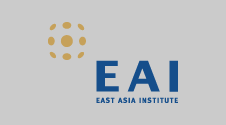
Moon Faces Two Americas in Trying to Make Peace with North Korea
Commentary | November 14, 2018
Seong-ho Sheen
A professor at Graduate School of International Studies at Seoul National University
It is no secret that America today is deeply divided between red America and blue America under President Trump. When it comes to foreign policy, American allies and friends often find themselves in difficult positions between these two Americas. But the true division that they face is not between red and blue, but between the President and the rest of his team. Mr. Trump is impulsive, transactional, and seems to have no concern for traditional American values. Others in his policy circle represent the more familiar, principled American approach: deliberate, rational, calculating, and driven by an underlying respect and desire to maintain America’s global leadership. This division often creates interesting dynamics in America’s dealings with major foreign policy issues like trade, alliance relations, and nuclear proliferation in Iran and North Korea. Trump’s ego and pride in being the “king of the deal” often clash with conventional wisdom in diplomacy leaving everyone, including his own staff, guessing as to his real intention. Trump, like a master gambler, enjoys being unpredictable and keeping his counterparts off balance with reckless bluffing and surprising offers.
North Korea is one of the prime examples of Trump’s high rolling diplomacy. Trump’s first year in office was largely spent making war-like threats against the North Korean regime, defined by anger and hostility against Pyongyang’s ongoing missile and nuclear tests in 2017. However, the combative rhetoric promising “fire and fury,” warning that the US was “locked and loaded,” and ready to deliver “total destruction” to North Korea suddenly transformed as Trump proclaimed his “great respect,” and “honor” for the North Korean leader when Kim Jong-un, through South Korean interlocutors, proposed a summit early this year. To everyone’s surprise, Trump accepted Kim’s offer and proceeded without much deliberation or a denuclearization action plan.
American hawks, led by NSC advisor John Bolton, maintain a deep mistrust towards North Korea’s commitment to denuclearization. They were deeply concerned when Trump emerged from the June Singapore summit without any tangible measures to take on Kim’s nuclear program. They view the first Trump-Kim summit as a substantial US concession which rewarded Kim for doing essentially nothing. This sentiment is widely shared throughout both liberal and conservative policy and intelligence circles in Washington. They advocate pushing for “complete, verifiable, irreversible, denuclearization” (CVID) or, as Secretary Pompeo has dubbed it, “final, fully verified denuclearization” (FFVD).
American hawks also view Trump’s maximum pressure approach to Pyongyang as the best opportunity to force the defiant Pyongyang regime to come clean regarding the true extent of its decade-old nuclear program once and for all. Trump’s aids are determined to prevent their boss from being tricked by the North Korean charm offensive a second time. They want hard evidence of Pyongyang’s denuclearization commitment accompanied by concrete measures before Trump heads for a second summit.
Meanwhile, South Korea’s administration has pushed for more peaceful and stable engagement with North Korea. Moon Jae-in made it clear that his first priority is peace on the Korean Peninsula. While echoing the goal of CVID, Moon tried his best to connect Kim and Trump so that they might engage in dialogue, not war. Moon met with Kim three times over the past six months, each time emphasizing the importance of denuclearization in order to further the peace process between Washington and Pyongyang.
The problem is that CVID is not easy. Dr. Sig Hecker, a nuclear expert at Stanford University, says it will take up to ten years to achieve under the best circumstances with North Korea’s full cooperation. Many experts suspect it will be difficult for Kim to give up the regime’s “treasure sword,” which offers a powerful deterrence against the mighty US-ROK alliance.
As Moon pushes for the second Trump-Kim summit as the next step for replacing the Korean War armistice with a peace treaty, which would mark a tectonic shift in inter-Korean relations, the key issue to be addressed is to what extent a deal on the nuclear front must be finalized for Trump to meet Kim again. At the moment, prospects do not appear bright as Washington and Pyongyang seem engaged in a serious tug of war over the denuclearization issue. Bolton and Pompeo are reportedly pushing for more concrete measures including a nuclear list, inspections, and a time line as prerequisites to a summit, while the North Koreans are threatening to resume their halted nuclear program.
As before, Moon finds himself boxed in between American demands for more pressure on North Korea and Pyongyang’s call for more help from Seoul to ease the pain of economic sanctions. And once again, there is only one person who can help him- Trump. For all the controversy and recklessness that have characterized Trump’s foreign policy management, it was indeed Trump’s unorthodox approach that opened the door for the Moon’s engagement efforts with North Korea. The good news is, with the US midterm elections over, Trump can now direct his appetite for another glamorous foreign policy moment towards North Korea. The bad news is that, having been stung by the Democrats in the House elections, Trump may lash out with new anger towards Kim for his nuclear defiance. Which Trump will show up remains to be seen.■
■ Seong-ho Sheen is also a member of Policy Advisory Board of Ministry of Defense, Republic of Korea.

Tasks Ahead beyond the Stalemate
Young-Sun Ha | 14.November.2018
LIST